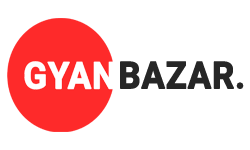In this article, we explore the topic of aortic aneurysms, providing valuable insights into their symptoms, causes, and available treatment options. Whether you’re seeking general knowledge or specific information about this condition, we’ve got you covered.
Understanding Aortic Aneurysms
An aortic aneurysm is a potentially serious condition characterized by a weakened and bulging area in the wall of the aorta, the largest blood vessel in the body. This bulge can develop in different sections of the aorta, including the abdominal aorta (abdominal aortic aneurysm) or the thoracic aorta (thoracic aortic aneurysm). Aortic aneurysms can be life-threatening if they rupture, leading to severe internal bleeding.
Common Symptoms of Aortic Aneurysms
In many cases, aortic aneurysms do not cause noticeable symptoms until they reach a critical size or rupture. However, when symptoms do occur, they may include:
- Pain: Sudden, intense, or persistent pain in the chest, abdomen, back, or flank area.
- Pulsating Sensation: Feeling a pulsating sensation in the abdomen.
- Breathing Difficulties: Shortness of breath or difficulty breathing.
- Hoarseness: Changes in voice or persistent hoarseness.
- Coughing or Wheezing: Persistent coughing or wheezing.
- Swallowing Difficulties: Difficulty swallowing or a sense of fullness in the throat.
It’s important to note that these symptoms can also be associated with other medical conditions. If you experience any of these symptoms, it’s crucial to seek immediate medical attention to determine the underlying cause.
Causes and Risk Factors
The exact causes of aortic aneurysms are not always clear, but several factors can contribute to their development and progression. These include:
Atherosclerosis
The buildup of fatty deposits (plaques) on the inner walls of the arteries can weaken the arterial walls and contribute to the formation of aneurysms. Atherosclerosis is a common risk factor for aortic aneurysms.
Genetic Factors
Certain genetic conditions, such as Marfan syndrome, Ehlers-Danlos syndrome, and Turner syndrome, can increase the risk of developing aortic aneurysms. These conditions affect the connective tissue, making the arterial walls more susceptible to weakening and bulging.
Age and Gender
Aortic aneurysms are more commonly observed in individuals over the age of 60. Men are also at a higher risk than women.
Smoking
Smoking is a significant risk factor for the development and progression of aortic aneurysms. The harmful chemicals in tobacco smoke can weaken the arterial walls, making them more prone to aneurysm formation.
High Blood Pressure
Uncontrolled high blood pressure can place increased stress on the arterial walls, contributing to their weakening and potential aneurysm development.
Diagnosis and Screening
Since aortic aneurysms often do not present symptoms until they become critical or rupture, early detection plays a crucial role in preventing complications. Screening and diagnosis of aortic aneurysms may involve:
- Physical Examination: A thorough examination of the abdomen, chest, and back to check for any abnormalities or pulsating sensations.
- Imaging Tests: Imaging techniques such as ultrasound, computed tomography (CT) scan, or magnetic resonance imaging (MRI) can provide detailed images of the aorta and identify the presence of an aneurysm.
- Monitoring: In some cases, individuals with smaller aneurysms may be monitored regularly with imaging tests to track their size and progression.
Treatment Options
The treatment of aortic aneurysms depends on several factors, including the size, location, and overall health of the patient. Treatment options may include:
Medical Management
For smaller aneurysms that are not at an immediate risk of rupture, a “watchful waiting” approach may be recommended. This involves regular monitoring through imaging tests and managing associated risk factors such as blood pressure control and smoking cessation.
Surgery
Surgical intervention may be necessary for larger aneurysms or those at risk of rupture. Surgical options include open repair, where the aneurysm is removed and replaced with a synthetic graft, or endovascular repair, a minimally invasive procedure that involves inserting a stent graft to reinforce the weakened artery.
Medications
Medications may be prescribed to manage underlying risk factors and conditions such as high blood pressure and high cholesterol, which can contribute to the progression of aortic aneurysms.
Prevention and Lifestyle Modifications
While it may not be possible to prevent all cases of aortic aneurysms, certain lifestyle modifications can help reduce the risk and slow their progression:
- Quit Smoking: Smoking cessation is crucial in preventing the development and progression of aortic aneurysms.
- Maintain a Healthy Weight: Adopting a balanced diet and engaging in regular physical activity can help manage weight and reduce the risk of aortic aneurysms.
- Control Blood Pressure: Regular monitoring and management of blood pressure can help reduce the strain on arterial walls.
- Manage Cholesterol Levels: A healthy diet and medication, if necessary, can help control cholesterol levels and prevent the buildup of plaques in the arteries.
Conclusion
Aortic aneurysms are potentially life-threatening conditions that require prompt medical attention. Understanding the symptoms, causes, and available treatment options is crucial for early detection and effective management. If you experience any symptoms associated with aortic aneurysms or have known risk factors, consult a healthcare professional for a thorough evaluation. At Gyan Bazar India, we aim to provide reliable information to help you make informed decisions about your health and well-being.
Remember, early detection and appropriate treatment can significantly improve outcomes and enhance your quality of life.

